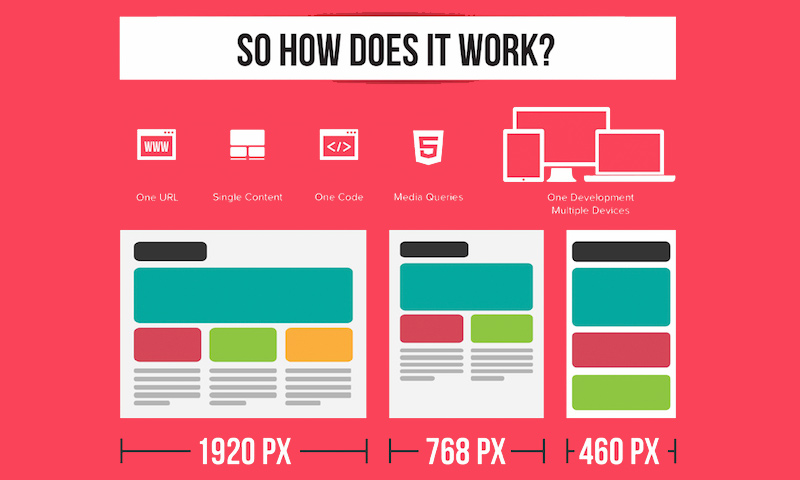The Advancement Of Web Design: Then And Now
The Advancement Of Web Design: Then And Now
Blog Article
Content Author-Hartley Molina
In the past, web sites were basic and concentrated on details. Navigation was straight, and layout was for desktop computers. Now, user experience is essential. https://www.techradar.com/news/8-seo-techniques-to-increase-website-traffic-in-2021 guides styles for very easy navigation. Responsive formats match various devices. Today, dark setting reduces pressure, and minimal menus enhance navigation. Interactive features involve individuals, and strong visuals stick out. AI integration enhances engagement. See how style has actually advanced to improve your on the internet trip.
Very Early Days of Web Design
In the very early days of web design, simplicity reigned supreme. Internet sites were fundamental, with limited colors, font styles, and layouts. The emphasis was on providing information rather than flashy visuals. https://www.business2community.com/search-engine-optimization/googles-page-experience-update-2021-are-you-prepared-for-it-infographic-02437293 accessed the net via slow-moving dial-up connections, so speed and performance were key.
Navigation menus were straightforward, generally located at the top or side of the web page. Internet sites were designed for home computer, as mobile surfing wasn't yet common. Web content was king, and developers prioritized easy readability over complex layout elements.
HTML was the primary coding language utilized, and developers needed to work within its restrictions. Computer animations and interactive features were very little compared to today's standards. Sites were fixed, with little dynamic content or customized user experiences.
Increase of User-Focused Layout
With the advancement of website layout, a change in the direction of user-focused style concepts has actually ended up being increasingly prominent. Today, creating websites that prioritize customer experience is critical for engaging visitors and achieving service objectives. User-focused style involves recognizing the requirements, preferences, and behaviors of your target audience to customize the website's format, web content, and features appropriately.
Designers currently perform complete research, such as individual studies and use screening, to gather understandings and responses directly from customers. This data-driven approach assists in creating user-friendly navigation, clear calls-to-action, and visually enticing interfaces that reverberate with site visitors. By placing the customer at the facility of the layout procedure, sites can provide a much more individualized and delightful experience.
Responsive layout has actually also emerged as an essential facet of user-focused design, guaranteeing that sites are enhanced for various devices and screen sizes. This flexibility boosts ease of access and usability, dealing with the diverse methods customers engage with websites today. Essentially, the increase of user-focused style represents a shift towards developing digital experiences that prioritize the demands and assumptions of completion user.
Modern Trends in Web Design
Check out the most recent fads shaping website design today. One noticeable fad is dark setting style, supplying a smooth and contemporary appearance while lowering eye strain in low-light atmospheres. Another essential pattern is minimal navigation, simplifying food selections and boosting user experience by concentrating on essential elements. Incorporating micro-interactions, such as computer animated buttons or scrolling effects, can produce a more interesting and interactive web site. Receptive layout stays critical, guaranteeing seamless individual experiences throughout different devices. Furthermore, making use of strong typography and asymmetrical designs can include visual interest and accentuate details material.
Integrating AI innovation, like chatbots for customer support or tailored recommendations, improves customer involvement and improves procedures. Accessibility has also become a significant fad, with designers focusing on comprehensive style techniques to satisfy diverse user demands. Embracing sustainability by maximizing website efficiency for speed and effectiveness is another arising pattern in web design. Teaming up with user feedback and data analytics to repeat and boost design constantly is vital for remaining appropriate in the ever-evolving electronic landscape. By accepting these contemporary fads, you can create a visually appealing, straightforward internet site that reverberates with your target market.
Conclusion
As you reflect on the advancement of web site design from the early days to now, you can see just how user-focused style has become the driving force behind modern-day trends.
Accept the trip of modification and adjustment in web design, constantly maintaining the customer experience at the center.
Tippingpointdigital
Keep present with the current trends and modern technologies, and never ever stop advancing your method to produce visually magnificent and user-friendly sites.
Evolve, adjust, and produce - the future of web design remains in your hands.
